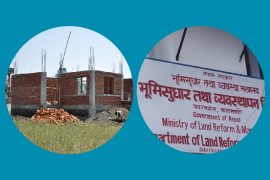Last year, Nepal Rastra Bank (NRB) eased caps on home and auto loans from July 2017. The central bank increased loan-to-value ratio on vehicle loans from 50 percent to 65 percent on private cars in the fiscal 2017-2018 monetary policy. Meanwhile, the NRB raised the home loan cap from RS 10 million to RS 15 million.
This came as a relief to the people planning to acquire new homes and private cars. Buyers of private vehicles are required to make a 35 percent down payment of the total value of the vehicle. NRB had also barred financial institutions including banks from extending loans amounting to more than 50% of the car’s value as a measure to reduce the flow of credit in unproductive sectors. However, this was faced by criticism from the local automobile industry who said that the move would affect growth. They also said that it would reduce revenue collected from the sector by the government. The auto dealers noted that sales of private cars had since reduced by almost 40 percent. Auto loans on private electric vehicles were also capped at 80 percent in the 2017/2018 Monetary Policy.
The auto dealers expressed that the government should leave loan capping issues to financial institutions and banks. They explained that the automobile sector is a huge generator of revenue for the government and also provides employment to many. As such, the government policies should not control the flow of loans in the sector, but instead, financial institutions should fix their rates. This was despite the fact that the extended auto loan cap gave momentum to vehicle sales.
The 2017/2018 Monetary Policy also reduced the cap on Kathmandu Valley real estate lending. It barred banks and financial institutions from issuing loan interests at more than 40 percent of the property value from 50 percent.
This Monetary Policy failed to address the sustainability of interest rates on loans offered. The NRB was unable to ensure that private investors acquire loans at low-interest rates under the new monetary policy. Additionally, the NRB allocation of RS 200 million from RS 100 million as refinancing funds was barely enough. The government also overlooked suggestions from the private sector including the incorporation of the Confederation of Nepalese Industries (CNI) in 2017/2018 Monetary Policy. The NRB also ignored the idea to reduce cash reserve ratio (CRR) for financial institutions (BFIs) and banks. This was aimed at addressing credit problems while increasing funds for loaning out. The 2017/2018 Monetary Policy did not address the promotion of economic growth and investment increase in the country. CNI projected that the refinancing fund should be at least RS 100 billion rather than the current RS 200 million.
The government is unlikely to realize the projected 7.2 percent economic growth this year. This is primarily because of the slowed growth in auto and real estate industries due to loan caps.







